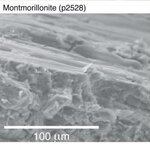Geology

The cyclic wobble of the Earth on its axis, axial precession, controls the production of "fixed" nitrogen, a nutrient essential to the health of the ocean, according to a new study.
The researchers report that during the past 160,000 years nitrogen fixation rose and fell in a pattern that closely matched the changing orientation of Earth's axis of rotation, or axial precession. Axial precession occurs on a cycle of roughly 26,000 years and arises because the Earth wobbles slightly as it rotates, similar to the wobble of a toy top. Studies from the 1980s revealed that precession leads to…

Researchers have uncovered the largest single volcano yet documented on Earth.
Tamu Massif covers an area roughly equivalent to the British Isles or the state of New Mexico, making it nearly as big as the giant volcanoes of Mars and placing it among the largest in the Solar System. Tamu Massif covers an area of about 120,000 square miles. By comparison, Hawaii's Mauna Loa – the largest active volcano on Earth – is approximately 2,000 square miles, or roughly 2 percent the size of Tamu Massif. Olympus Mons on Mars has a giant volcano visible on a clear night with a good backyard telescope, and…

Natural rivers are not straight and they are rarely idle; instead, they bend and curve and sometimes appear to wriggle across the surface over time.
That rivers can meander is obvious but how and why they do so is less well known. These questions are complicated by the fact that researchers have for the most part been unable to realistically create a meandering river in a laboratory.
Scientists have previously created simulated streams that bend and branch, but they were not able to limit the river to only a single main flow path or maintain such dynamic motion past the initial bend…

Early on a winter morning in 2011, residents of western Norway who lived or worked along the shores of the nation's fjords were startled to see the calm morning waters suddenly begin to rise and fall.
Starting at around 7:15 local time and continuing for nearly 3 hours, waves up to 5 feet high surged through the previously still fjord waters. The scene was captured by security cameras and by people with cell phones, reported to local media, and investigated by a local newspaper.
Drawing on this footage, and using a computational model and observations from a nearby seismic station, Bondevik…

Data collected from 2009 through 2012 by NASA's Operation IceBridge, an airborne science campaign that studies polar ice, reveals evidence of a large and previously unknown canyon hidden under a mile of Greenland ice.
The canyon has the characteristics of a winding river channel and is at least 460 miles long, making it longer than the Grand Canyon. In some places, it is as deep as 2,600 feet, on scale with segments of the Grand Canyon. This immense feature is thought to predate the ice sheet that has covered Greenland for the last few million years.
Hidden for all of human history, the…

The people of Youngstown, Ohio say they never felt an earthquake before two-and-a-half years ago. But between January of 2011 and February of 2012, 109 tremors were recorded and the author of a new article points the finger at hydraulic fracturing - fracking.
In December 2010, Northstar 1, a deep injection well built to pump wastewater produced by fracking in the neighboring state of Pennsylvania, came online. In the 14 months that followed seismometers in and around Youngstown recorded 109 earthquakes; the strongest was a magnitude 3.9 earthquake on December 31, 2011. Six of them could…

Monitoring slow earthquakes may provide the basis for reliable prediction in areas where slow quakes trigger normal earthquakes.
Geoscientists looked at the mechanisms behind slow earthquakes and found that 60 seconds before slow stick slip began in their laboratory samples, a precursor signal appeared.
Normal stick slip earthquakes typically move at a rate of three to 33 feet per second, but slow earthquakes, while they still stick and slip for movement, move at rates of about 0.004 inches per second taking months or more to rupture. However, slow earthquakes often occur near…
Ice ages and warm periods have alternated fairly regularly in the Earth's history: 90,000 of every 100,000 years in the past had vast areas of North America, Europe and Asia being buried under thick ice sheets.
Eventually, the pendulum swings back, it gets warmer and the ice masses melt.
There's solid evidence of this 100,000-year cycle in glacial moraines, marine sediments and arctic ice, but a plausible explanation for it is harder to find.
Using computer simulations, a team has concluded that the ice-age/warm-period interchange depends heavily on the alternating influence of…
If you want to understand Earth's evolution, start with how heat is conducted in the deep lower mantle 400 to 1,800 miles below the surface.
Researchers recently did. They were able to simulate the pressure conditions in this region to measure thermal conductivity using a new measurement technique developed by the collaborators and implemented by the Carnegie team on the mantle material magnesium oxide (MgO). They found that heat transfer is lower than other predictions, with total heat flow across the Earth of about 10.4 terawatts, which is about 60 % of the power used today by civilization…

A new mineral, cubic boron nitride, has been officially approved by the International Mineralogical Association as “qingsongite.” You'd think there aren't a lot of mineral discoveries happening every day but this had been in committee since 2009. Geology paces itself and perhaps so do naming conventions. But it turns out there are at least 100 proposals for new minerals and their names submitted each year. To-date, more than 4700 species of minerals have been recognized.
Qingsongite was named after Qingsong Fang (1939–2010), a professor at the Institute of Geology, the Chinese…